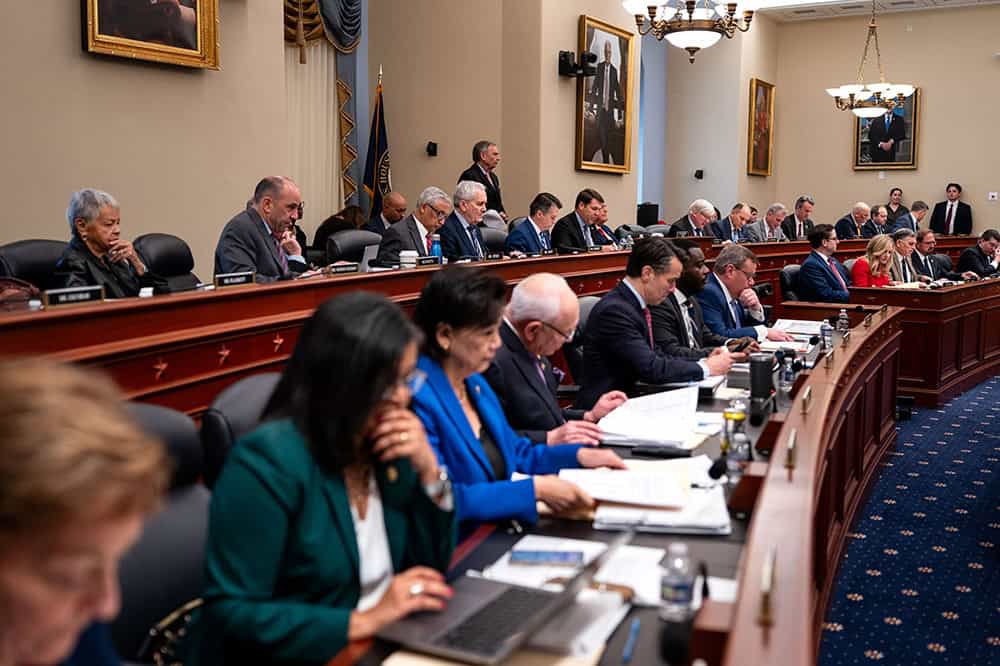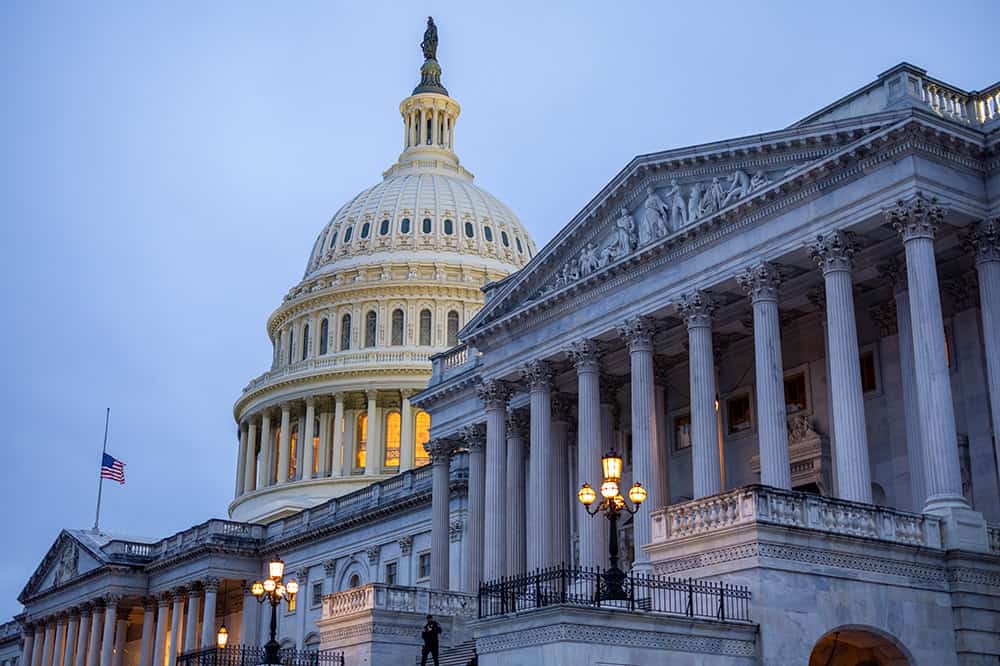The 2017 Tax Cuts and Jobs Act (TCJA) made a number of changes to the corporate tax code, most prominently lowering the top corporate tax rate from 35 to 21 percent. For the first few years after TCJA’s enactment, revenues from corporate taxes dropped sharply, but they returned to pre-TCJA levels starting in 2021. What explains the fluctuation in corporate tax revenues since the enactment of TCJA?
How Did the TCJA Change Corporate Taxation?
The TCJA significantly changed tax rules for corporations, and, in contrast to its individual tax provisions, most of the changes to corporate taxes are permanent. The 2017 tax law was the most sweeping change to federal tax rules over the past 30 years and affected both domestic and international corporate tax law. Some of the most notable changes include:
- A Lower top marginal rate: The TCJA lowered the top marginal corporate tax rate from 35 percent to 21 percent. It also made the corporate income tax a flat rate rather than multiple progressive rates based on businesses’ profits.
- 100 percent bonus depreciation: Bonus depreciation allows businesses to deduct a greater share of the cost of short-lived investments like machinery and equipment. Prior to the TCJA, businesses were allowed 50 percent bonus depreciation. The TCJA expanded bonus depreciation to 100 percent through 2022, meaning businesses could deduct the full cost of new qualified investments. After 2022, bonus depreciation decreased by 20 percentage points each year, and it will continue to decrease until it is eliminated in 2027.
- New rules for international income: One of the most significant international provisions of the law was a one-time repatriation tax on the past profits of the foreign subsidiaries of U.S. corporations. That provision was meant to reduce the tax advantages of shifting profits to countries with lower tax rates. While the repatriation tax expanded the corporate tax base (all taxable income for U.S. corporations), that international income was taxed at an effective rate between 8 and 15.5 percent, significantly lower than the new statutory rate of 21 percent. Other international provisions had smaller effects on the tax liabilities of corporations.
- A Growing Share of S Corporations: According to the Congressional Budget Office (CBO), a growing share of corporations have organized as S corporations rather than C corporations. C corporations are subject to federal corporate taxes, while S corporations pass through their profits to the owners of the corporation who are subject to individual income taxes. Because the TCJA reduced individual income tax rates, more businesses are incentivized to structure as an S corporation.
Corporate Tax Revenues After the TCJA
The combination of the above provisions — along with shifts in corporate behavior and other legislative changes — reduced corporate tax liability and effective tax rates. However, the TCJA’s impact on federal revenues from corporate taxes has been mixed and can be split into two periods: one with lower revenues (2018–2020) followed by another of revenues consistent with corporate tax receipts before the tax law (2021–2023). The first period was mostly a result of lower tax rates and an increase in tax deductions for corporations. The subsequent rebound in corporate taxes was primarily due to strong economic growth and a spike in corporate profits.
Lower Corporate Tax Revenues from 2018 to 2020
The changes to corporate taxation enacted in the TCJA contributed to a notable reduction in corporate tax revenues for the federal government in the first three years that the law was in effect. CBO attributed most of that decline to changes in the TCJA, particularly the reduction of the corporate tax rate. The reduction in the top marginal rate contributed to a decrease in the effective tax rate for all active corporations from 26.4 percent in tax year 2017 to 12.5 percent in 2018. The lower effective rate continued through tax year 2020 (the latest year for which IRS data is available). According to researchers from the National Bureau of Economic Research (NBER), corporate tax revenues in the first year of the TCJA were 48 percent less than they would have been had the law not been enacted.
Corporate Tax Revenues Were Higher From 2021 to 2023
Corporate tax revenues increased dramatically in 2021, rebounding from the prior low period to exceed CBO’s post-TCJA projections. Analysis from CBO suggests that larger than expected corporate profits drove the increase in corporate income tax revenues. According to the Bureau of Economic Analysis, corporate profits after taxes increased from 7.6 percent of GDP in 2020 to 8.8 percent in 2021. That was the seventh largest year-over-year increase over the past 50 years, and corporate profits in 2021 were the highest as a share of GDP since the federal government began recording economic statistics in 1929. However, the cause of that growth in corporate profits is debated among economists and policy specialists. Researchers at the Brookings Institution found that the increase in profits was likely a result of economic growth, high inflation, and pandemic-related relief spending, not economic effects resulting from changes in the TCJA. On the other hand, the Tax Foundation reported that the TCJA played a significant role in boosting corporate investment, thereby increasing economic growth, corporate profits, and corporate taxes paid.
Even though corporate tax revenues were about the same as pre-TCJA budgetary projections, researchers from NBER found that the TCJA continued to produce negative revenue effects from 2021 to 2023. Despite increased corporate investment and wages mitigating the negative revenue effects, the rebounding revenues during that time were not enough to offset the reduction in revenues caused by the tax cuts. The researchers found that, in 2022, the federal government missed out on 38 percent of the corporate tax revenues it would have received if the TCJA had not been enacted. For the 2018 to 2027 period, they estimate that the corporate provisions of the TCJA will reduce corporate tax revenues by 40 percent.
Corporate Taxes and Fiscal Sustainability Moving Forward
Since the enactment of the TCJA in 2017, other legislation has been enacted that changed federal tax rules for corporations. Most notably, the Inflation Reduction Act established a 15 percent corporate minimum tax as well as additional Internal Revenue Service funding to enhance tax compliance. Further, starting in 2025, some corporate tax provisions of the TCJA are set to expire. Those include bonus depreciation, certain taxes on international income, and the deduction for pass-through business income. In January, lawmakers proposed the Tax Relief for American Families and Workers Act, which would temporarily extend some corporate tax provisions from the TCJA through 2026. As the expiration of those provisions approaches, lawmakers have the opportunity to consider new tax reforms that can improve the nation’s fiscal outlook.
If lawmakers choose to extend expiring provision of the TCJA, they should target the provisions that were most effective. For example, researchers at NBER found that 100 percent bonus depreciation was a more efficient incentive than the reduction in the corporate tax rate because of its ability to spur additional investment at a lower cost, and such extensions could be offset to avoid increasing the deficit.
Conclusion
Maintaining adequate revenues is a critical pillar of a fiscally responsible federal government. As lawmakers consider potential tax reforms in the coming years — large parts of the TCJA expire in 2025 — they should focus on those proposals that can support economic growth, improve the nation’s fiscal outlook, and enhance fairness across tax entities and income brackets.
Photo by Marco Bottigelli/Getty Images
Further Reading
Republicans Considering Costly Tax Cut Proposals
Leaders in Congress and the Administration have outlined a broad package of tax cuts that could total $9.1 trillion.
Why Do Budget Baselines Matter?
Applying the current-policy baseline would not only be fiscally irresponsible in terms of this year’s tax debate, but it would set a dangerous precedent for the future.
Social Security Reform: Options to Raise Revenues
Here are the pros and cons for three approaches to increasing funds dedicated to Social Security.


